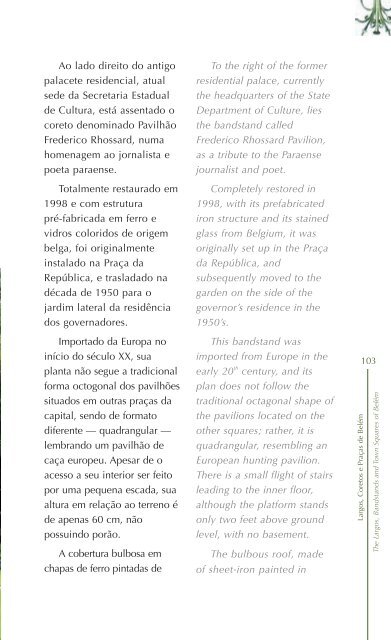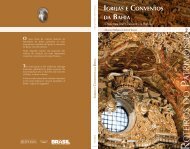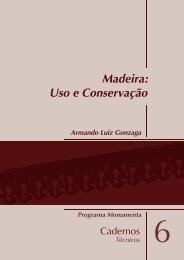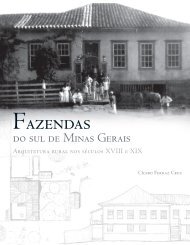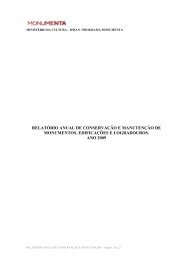LARGOS, CORETOS E PRAÇAS DE BELÉM - Monumenta
LARGOS, CORETOS E PRAÇAS DE BELÉM - Monumenta
LARGOS, CORETOS E PRAÇAS DE BELÉM - Monumenta
Create successful ePaper yourself
Turn your PDF publications into a flip-book with our unique Google optimized e-Paper software.
Ao lado direito do antigo<br />
palacete residencial, atual<br />
sede da Secretaria Estadual<br />
de Cultura, está assentado o<br />
coreto denominado Pavilhão<br />
Frederico Rhossard, numa<br />
homenagem ao jornalista e<br />
poeta paraense.<br />
Totalmente restaurado em<br />
1998 e com estrutura<br />
pré-fabricada em ferro e<br />
vidros coloridos de origem<br />
belga, foi originalmente<br />
instalado na Praça da<br />
República, e trasladado na<br />
década de 1950 para o<br />
jardim lateral da residência<br />
dos governadores.<br />
Importado da Europa no<br />
início do século XX, sua<br />
planta não segue a tradicional<br />
forma octogonal dos pavilhões<br />
situados em outras praças da<br />
capital, sendo de formato<br />
diferente — quadrangular —<br />
lembrando um pavilhão de<br />
caça europeu. Apesar de o<br />
acesso a seu interior ser feito<br />
por uma pequena escada, sua<br />
altura em relação ao terreno é<br />
de apenas 60 cm, não<br />
possuindo porão.<br />
A cobertura bulbosa em<br />
chapas de ferro pintadas de<br />
To the right of the former<br />
residential palace, currently<br />
the headquarters of the State<br />
Department of Culture, lies<br />
the bandstand called<br />
Frederico Rhossard Pavilion,<br />
as a tribute to the Paraense<br />
journalist and poet.<br />
Completely restored in<br />
1998, with its prefabricated<br />
iron structure and its stained<br />
glass from Belgium, it was<br />
originally set up in the Praça<br />
da República, and<br />
subsequently moved to the<br />
garden on the side of the<br />
governor’s residence in the<br />
1950’s.<br />
This bandstand was<br />
imported from Europe in the<br />
early 20 th century, and its<br />
plan does not follow the<br />
traditional octagonal shape of<br />
the pavilions located on the<br />
other squares; rather, it is<br />
quadrangular, resembling an<br />
European hunting pavilion.<br />
There is a small flight of stairs<br />
leading to the inner floor,<br />
although the platform stands<br />
only two feet above ground<br />
level, with no basement.<br />
The bulbous roof, made<br />
of sheet-iron painted in<br />
Largos, Coretos e Praças de Belém<br />
103<br />
The Largos, Bandstands and Town Squares of Belém


